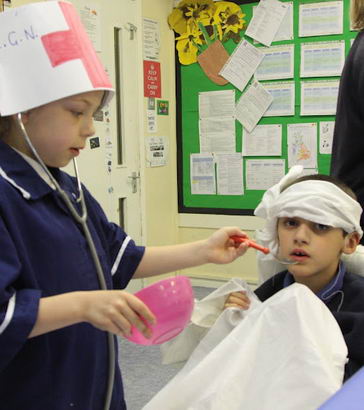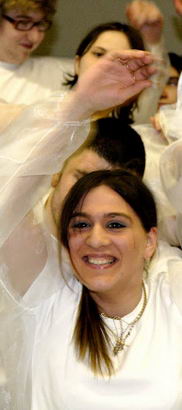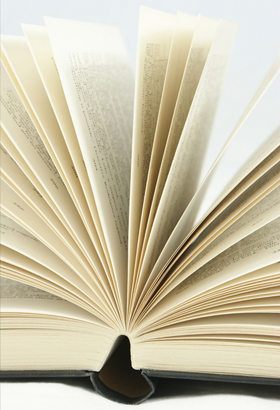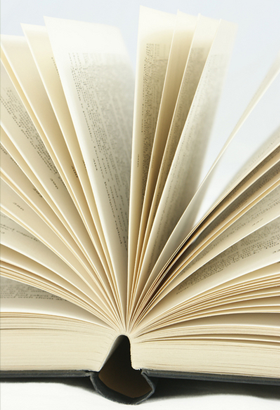
Keith Park has produced a mine of easy to replicate resources (most of which are referenced here) and working through his call and response method can produce instant drama teachers of us all. Thought will also need to be given to extending and stretching learners to think and problem solve issues which drama naturally throws up.
Keith Park, Nicola Grove, Melanie Peter and Viv Hinchcliffe have all published extensively on drama and all or any of their writings will be relevant. All of the writers noted are interested in stretching pupils beyond the pre-scripted, structured and teacher-led 'Christmas Show' production type. All of their writings give practical hands-on ideas about how you might do this.
Drama should incorporate all of the following:
- Initiation – especially for those who might seldom do it – by leading the call or pressing a switch to start the call;
- Awareness – of the sights and sounds involved;
- Anticipation – especially of hook lines
in the drama; - Turn-taking – especially through call
and response; - Showing self (or showing off) – demonstrating a 'this is me' behaviour especially when it's a particular child's turn in the name game;
- Showing objects – perhaps those used as props, as an attention sharing behaviour;
- Giving objects – again a shared behaviour;
- Seeking physical proximity;
- Gaze alternation – looking from an object to someone else or vice versa, as a means of sharing attention;
- Joint attention – when two or more people are intentionally looking at the same thing or person at the same time;
- Declarative pointing – pointing at an object (or person) and looking at another person to indicate 'look at that', as if to say, this, he or she is interesting.
(Park, 2002)

Aitken et al (2000) note the efficacy of drama and play activities through the use of rhymes, rhythms and songs as an excellent way of promoting gross body movements. However, the whole issue of dance and PMLD is one which is notable for its lack of research and published practice (Lammond, 2010).
Again, there is a tendency to think of dance and PMLD as the practice of pushing wheelchairs to music, and while this may well have some beneficial effects if done sympathetically, it is another example of things being done to the person, rather than with the person.
The work of Veronica Sherborne is relevant here (Sherborne, 2001) but will need some adapting to accommodate PMLD students (especially those who are older). While Sara Bannerman-Haig's work in a special school with both SLD and PMLD pupils primarily reflects on dance and movement as a central means of delivering psychotherapy, it does give some interesting ideas on the possibilities open to both teachers and physical therapists (Bannerman-Haig, 1997; Bannerman-Haig, 2006).

Aitken, S., Buultjens, M., Clark, C., Eyre, J.T. and Pease, L. (2000) Teaching Children who are Deafblind, London: David Fulton.
Bannerman-Haig, S. (1997) Facilitating change, Dance and the Child International (UK), 4, 14-18.
Bannerman-Haig S. (2006) Stretching, tensing and kicking: Aspects of infantile movement in dance movement therapy with children and adolescents in special education, in: Payne, H. (ed.) Dance Movement Therapy: Theory, research and practice, London: Routledge.
Grove, N. (2005) Ways into Literature. Stories, plays and poems for pupils with SEN, London: David Fulton.
Grove, N. (2010) The Big Book of Storysharing, London: Senjit.

Grove, N. (ed.) (2012) Bringing Literature to Life: Introducing a Range of Approaches for Teachers of Children with Special Educational Needs, London: Routledge.
Grove, N. and Park, K. (2000) Developing social cognition through literature for people with learning disabilities: Macbeth in Mind, London: Jessica Kingsley.
Lammond, I. (2010) Evaluating the impact of incorporating dance into the curriculum of children encountering profound and multiple learning difficulties, Body, Movement and Dance in Psychotherapy, 5 (2), 141-149.
Park, K. (2002) 'The Tempest' on stage at Shakespeare's Globe Theatre, PMLD Link, Spring Issue.
Sherborne, V. (2001) Developmental Movement for Children, London: Worth.